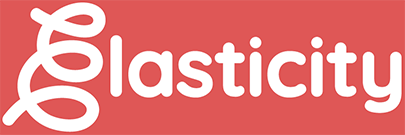SEO for Educational Institutions: 7 Proven Tactics 2025
SEO for educational institutions is crucial for bolstering digital presence and attracting students in today’s tech-driven world. Achieving high search engine rankings ensures that prospective students and their families can easily find educational programs, scholarships, and campus events.
Here’s a quick take on why SEO is vital for educational institutions:
- Increases Visibility: Puts your institution on the digital map, allowing prospective students to find your programs easily.
- Boosts Credibility: Higher search rankings improve reputation and trustworthiness.
- Attracts Quality Leads: Drives interested and qualified individuals to your website, increasing chances of enrollment.
- Improves Engagement: Well-optimized content keeps users on-site longer, increasing engagement and satisfaction.
I’m Jen Stamulis. With over a decade of experience in driving growth and executing strategic marketing across diverse sectors, my focus has extended to helping educational institutions master SEO. By leveraging my expertise in crafting data-driven campaigns, I’ve ensured these institutions reach their full online potential.
As we explore the components of SEO for educational institutions, you’ll uncover practical strategies to lift your school’s digital presence.

Understanding SEO for Educational Institutions
SEO, or Search Engine Optimization, is like the magic wand that helps educational institutions become visible online. Imagine you’re a school or university. You want students to find you when they’re searching for courses, scholarships, or even fun campus events. That’s where SEO comes in.
SEO Definition
At its core, SEO is about making sure your website is easy for search engines like Google to find and understand. It’s like giving your website a map that guides search engines to your most important content. This involves using the right words, organizing your site well, and making sure everything runs smoothly.
Search Visibility
Search visibility is all about making sure your institution shows up in search results. Let’s say a student is searching for “best private schools in Denver.” If your school has optimized its SEO, it’s more likely to appear in those search results. This means more eyes on your website and more chances for students to learn about what you offer.
But why does this matter? Because if students can’t find you online, it’s like your school doesn’t exist to them. A strong SEO strategy ensures your institution is visible and top-of-mind when potential students are making decisions.

Audience Engagement
Once students find your site, you want them to stick around. That’s where audience engagement comes in. Engaging content keeps students interested and encourages them to explore more. This could be through informative blog posts, engaging videos, or interactive campus tours.
When your content is engaging, students are more likely to spend time on your site, learn about your programs, and even apply. This engagement not only boosts your chances of attracting students but also improves your site’s SEO. Search engines notice when users spend more time on a site, and they reward that with higher rankings.
In the next section, we’ll dig into the key components of SEO for educational institutions, breaking down the technical, on-page, and off-page strategies that can propel your school’s online presence to new heights.
Key Components of SEO for Educational Institutions
To master SEO for educational institutions, it’s crucial to understand its key components: Technical SEO, On-Page SEO, Off-Page SEO, and Content Strategy. Each plays a vital role in ensuring your school or university stands out online.
Technical SEO
Technical SEO is like the backbone of your website. It ensures that search engines can crawl and index your site effectively. Think of it as making sure your website’s foundation is solid.
-
Site Structure and Navigation: Create a clear hierarchy for your content. This helps both users and search engines find information easily. For instance, using breadcrumb navigation can guide users through your site, improving their experience.
-
Mobile Optimization: With the rise of mobile browsing, your site must be mobile-friendly. Google prioritizes sites that work well on mobile devices. Use responsive design to ensure your site adapts to different screen sizes.
-
Page Speed: A fast-loading site keeps visitors happy. Use tools like Google’s PageSpeed Insights to identify and fix speed issues. Slow sites can lead to higher bounce rates and lower rankings.
On-Page SEO
On-Page SEO involves optimizing individual pages on your site. It’s like making sure each page is dressed for success.
-
Keyword Research and Placement: Use tools like Google Keyword Planner to find relevant keywords. Place these keywords naturally in your content, headings, and meta descriptions. For example, terms like “online education programs” can help target specific searches.
-
Meta Descriptions and Headers: Write clear meta descriptions that summarize your page content. Use headers (H1, H2) to organize your content. These elements help search engines understand your page’s topic.
-
Images and Videos: Use optimized images and videos to improve your content. Compress images for faster loading, and add alt tags to describe them. This not only improves SEO but also accessibility.
Off-Page SEO
Off-Page SEO is about building your website’s reputation. It’s like networking for your site.
-
Backlinks: Earn links from reputable sites to boost your authority. For example, getting a mention from a well-known education blog can improve your credibility.
-
Social Media Engagement: Share your content on social media platforms to increase visibility. Engaging content can lead to more shares and links back to your site.
-
Local SEO: Optimize for local searches to attract nearby students. Ensure your Google My Business profile is up-to-date with accurate information.
Content Strategy
Content Strategy is all about creating valuable content that resonates with your audience. It’s like the voice of your institution online.
-
Quality Content: Develop informative articles, blog posts, and guides that address student needs. Regularly update your content to reflect industry trends and changes.
-
Engaging Formats: Use various formats like infographics, videos, and interactive content to keep users engaged. For example, virtual campus tours can provide an immersive experience for prospective students.
-
Consistency: Maintain a consistent posting schedule to keep your audience engaged. This not only helps with SEO but also builds trust with your audience.
By focusing on these key components, educational institutions can create a strong online presence. In the next section, we’ll explore strategies to improve SEO, including keyword research, internal linking, and outreach.
Strategies to Improve SEO for Educational Institutions
Improving SEO for educational institutions involves more than just setting up a website. It requires a strategic approach to make your institution stand out in search results. Here, we’ll cover some effective strategies: keyword research, content creation, internal linking, and outreach.
Keyword Research
Keyword research is the cornerstone of any successful SEO strategy. By understanding what prospective students and parents are searching for, you can tailor your content to meet their needs.
-
Long-Tail Keywords: Focus on specific phrases like “best private schools in Denver” rather than just “private schools.” These long-tail keywords are less competitive and more likely to attract your target audience.
-
Tools for Research: Use tools like Google Keyword Planner and SEMrush to find relevant keywords. These tools help identify what terms are popular and how you can incorporate them into your content.
Content Creation
Creating high-quality, relevant content is essential for engaging your audience and improving your search rankings.
-
Informative Articles and Guides: Write content that answers common questions or provides insights into educational trends. For instance, an article on “How to Choose the Right College” can attract students and parents alike.
-
Regular Updates: Keep your content fresh and up-to-date to reflect changes in the educational landscape. This signals to search engines that your site is active and relevant.
-
Diverse Formats: Use a variety of content types such as blog posts, videos, and infographics. For example, a virtual tour video of your campus can engage prospective students more effectively.
Internal Linking
Internal linking helps search engines understand the structure of your site and the relationship between different pages.
-
Strategic Links: Link related content within your site to guide users through your educational offerings. For example, a page about a specific degree program can link to related faculty profiles or course descriptions.
-
Anchor Text: Use descriptive anchor text that includes relevant keywords. This helps users and search engines understand the context of the link.
Outreach
Building relationships with other sites can improve your institution’s credibility and visibility.
-
Guest Blogging: Contribute articles to reputable educational blogs or websites. This not only earns backlinks but also positions your institution as a leader in the field.
-
Partnerships: Collaborate with local businesses or educational organizations for co-hosted events or webinars. These partnerships can lead to valuable backlinks and increased visibility.
-
Social Media Engagement: Share your content on social media platforms to reach a broader audience. Engaging content can lead to more shares and drive traffic back to your site.
By implementing these strategies, educational institutions can improve their online presence and attract more students. In the next section, we’ll dive into 7 Proven SEO Tactics for Educational Institutions, including optimizing page speed and earning reputable backlinks.
7 Proven SEO Tactics for Educational Institutions
When it comes to SEO for educational institutions, implementing proven tactics can significantly boost your online presence. Here are seven strategies that can make a real difference:
Target Long-Tail Keywords
Long-tail keywords are specific phrases that attract a precise audience. For instance, targeting “top engineering programs in Los Angeles” is more effective than “engineering programs.” Why? Because long-tail keywords face less competition and attract users who are more likely to engage with your content.
Specificity is the key here. By honing in on detailed queries, your institution can appear in searches that align closely with what potential students are actively seeking.
Create Course and Degree Pages
Having dedicated pages for each course or degree offered can improve navigation and improve user experience. A well-structured site helps users find what they need quickly, which is crucial for retaining their interest.
By providing detailed information on each program, you not only assist prospective students but also signal to search engines that your site is comprehensive and relevant.
Use HTTPS for Security
Switching to HTTPS isn’t just about security; it’s about trust. Google favors secure sites, so using HTTPS can improve your Google ranking. Moreover, users feel safer on secure sites, which can increase engagement and retention.

Host Promotional Events
Hosting events like open houses or webinars creates opportunities for content creation and earning backlinks. When you publish content about these events, it can attract attention from local news outlets or educational blogs, further enhancing your visibility.
Optimize Page Speed
Page speed is crucial. If your site takes too long to load, users will leave, affecting user retention and your Google rankings. Aim to have pages load in under three seconds by compressing images, minifying code, and caching web pages.
Implement Responsive Design
With the majority of users browsing from mobile devices, a mobile-friendly site is a must. Responsive design ensures your site looks great on any device, improving user engagement and making sure you don’t lose traffic from mobile users.
Earn Reputable Backlinks
Backlinks from respected sites can boost your site’s authority and drive traffic. Engage in guest blogging or collaborate with reputable educational platforms to earn these valuable links.
By focusing on these tactics, educational institutions can strengthen their SEO efforts and stand out in a crowded digital landscape. Next, we’ll explore how emerging technologies like AI and voice search can further improve your SEO strategy.
Leveraging AI and Emerging Trends in SEO
Emerging trends in SEO are changing how educational institutions connect with prospective students. AI tools, voice search, and video SEO are at the forefront of these changes. Let’s explore how these innovations can improve your institution’s online presence.
AI Tools
AI tools are changing SEO for educational institutions by making it easier to optimize content and analyze data. Tools like HubSpot AI and SEO AI can help schools create content that ranks higher on search engines. They analyze user behavior and suggest improvements, ensuring content aligns with what potential students are searching for.
AI also helps in keyword research, tracking rankings, and building backlinks. For example, AlliAi and Pro Rank Tracker offer insights into which keywords are performing well and where improvements can be made. By understanding these patterns, schools can create more targeted content that attracts the right audience.
Voice Search
“Hey, Alexa!” and “Hey, Siri!” are phrases that have become part of everyday life. As voice search grows, educational institutions must adapt their SEO strategies. Voice searches are more conversational and often longer than text searches. This means focusing on natural language and question-based queries.
Incorporating long-tail keywords that reflect how people naturally speak can improve your site’s visibility. For instance, instead of using “best colleges,” try “What are the best colleges for computer science?” This approach aligns with how users interact with voice-activated devices.
Video SEO
Video content is becoming increasingly important for engaging younger audiences. Statista reports a projected 4.81% increase in video advertising by 2028. However, creating videos is just the beginning; optimizing them for search engines is crucial.
To improve video SEO, educational institutions should use keyword-rich titles and descriptions. This strategy provides context and increases the likelihood of appearing in relevant searches. Hosting videos on platforms like YouTube, Vimeo, and even social media sites like TikTok and Instagram can boost visibility.
Embedding videos on your school’s website can also improve engagement metrics, like time-on-site, which positively impacts SEO performance.
By leveraging AI tools, optimizing for voice search, and embracing video SEO, educational institutions can stay ahead of the curve in the digital landscape. These strategies not only improve online visibility but also foster deeper connections with prospective students.
Next, we’ll address some frequently asked questions about SEO for educational institutions.
Frequently Asked Questions about SEO for Educational Institutions
What is SEO in education?
SEO for educational institutions is the practice of enhancing a school’s online presence to make it more visible in search engine results. This involves using relevant keywords, creating high-quality content, and optimizing web pages to attract and engage prospective students. By doing so, institutions can ensure that when students or parents search for educational programs, their school appears prominently in the results.
Why is SEO important for schools?
SEO is crucial for schools because it significantly boosts visibility and credibility. When a school ranks high in search engine results, it is more likely to be perceived as a reputable and trustworthy institution. This increased credibility can lead to higher enrollment numbers, as students and parents often equate search visibility with quality. Moreover, effective SEO strategies help schools reach a broader audience, ensuring that more potential students are aware of the programs and opportunities available.
How can educational institutions improve their SEO?
Improving SEO involves several strategies and tactics:
-
Keyword Research: Identify long-tail keywords that prospective students use. These are specific phrases like “best STEM programs in Denver” that have less competition and are more targeted.
-
Content Creation: Develop engaging and informative content that addresses the needs and interests of your audience. Use keywords naturally throughout the content to improve search rankings.
-
Internal Linking: Connect related content within your site to improve navigation and help search engines understand the structure of your site.
-
Outreach and Backlinks: Earn reputable backlinks from other educational websites and authoritative sources. This boosts your site’s authority and can drive more traffic.
-
Optimize Page Speed: Ensure your website loads quickly to improve user experience and retention. Use tools like Google’s PageSpeed Insights to identify areas for improvement.
-
Responsive Design: Make sure your website is mobile-friendly. With 60% of internet traffic coming from mobile devices, a responsive design is essential for user engagement.
By implementing these strategies, educational institutions can improve their search visibility, engage more effectively with their audience, and improve their overall online presence.
Next, we’ll conclude by highlighting how Elasticity’s expertise can support your institution’s digital strategy.
Conclusion
In the rapidly evolving digital landscape, mastering SEO for educational institutions is not just an option—it’s a necessity. At Elasticity, we understand the unique challenges and opportunities that educational institutions face in the digital field. Our expertise in SEO and digital strategy is designed to help schools and universities not only survive but thrive online.
Elasticity: Your Partner in Digital Success
With locations in Denver, Los Angeles, St. Louis, and Washington D.C., Elasticity is strategically positioned to support educational institutions across the nation. Our team of SEO experts brings a wealth of experience, ensuring that your institution can effectively reach prospective students and stakeholders.
Custom SEO Expertise
We offer a comprehensive suite of SEO services that are custom to the specific needs of educational institutions. From conducting in-depth keyword research to creating engaging content and optimizing technical aspects of your website, our strategies are designed to improve your online visibility and credibility.
A Holistic Digital Strategy
Beyond SEO, Elasticity is committed to crafting holistic digital strategies that encompass content creation, social media engagement, and emerging trends like AI and voice search. We believe in a multi-faceted approach that not only boosts search engine rankings but also fosters genuine connections with your audience.
By partnering with Elasticity, your institution can harness the power of digital marketing to attract more students, increase enrollment, and build a strong online reputation. Ready to lift your digital presence? Explore our search marketing services and find how we can help you achieve your goals.
With Elasticity by your side, the journey from classroom to clicks is just a click away.


